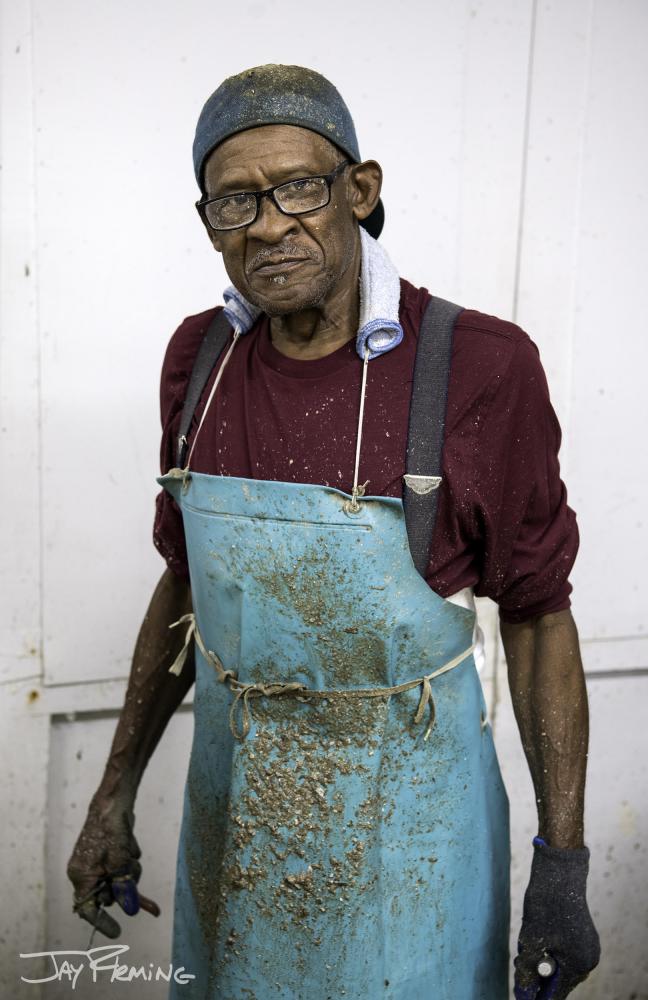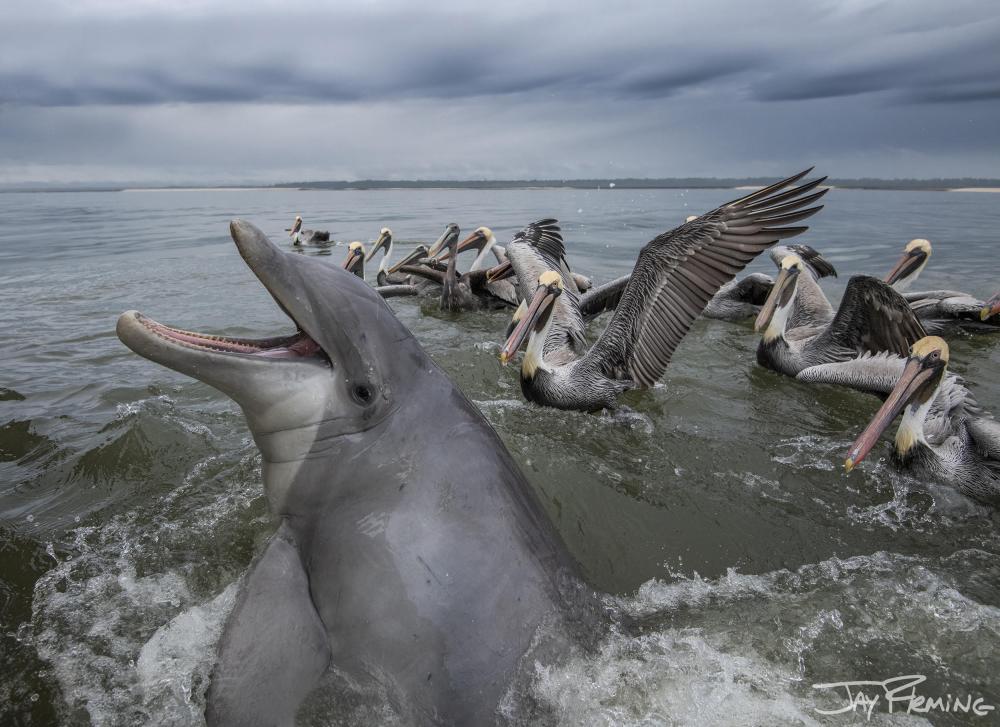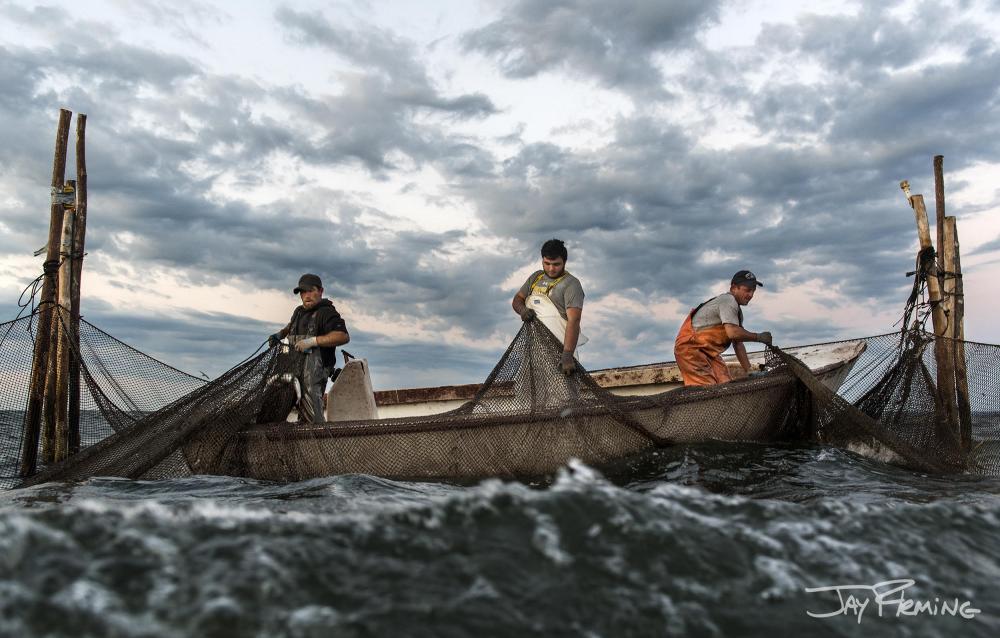Exploring the photography of Jay Fleming is an evocative experience.
The eyes of a waterman invite you to sit awhile and listen to his story. Reflections of a lighthouse dance on the water, and you instinctively put out your hands for balance, as if you are in the boat, too. Above and below the waterline, Fleming brings a fresh perspective to the Chesapeake Bay.
Born and raised in Annapolis, Fleming credits his father – professional nature photographer, Kevin Fleming – with inspiring his passion from an early age. With the Nikon 90s his father gave him, the young Fleming won his first national photography competition at the age of 14.
Perhaps Fleming inherited his father’s eye for detail, but his love of the Bay and passion for the people, their culture, and environment are uniquely his own.
Fleming describes himself as a visual storyteller. He curates his images with text for exhibits and publications, noting, “You can’t have one without the other.” To be sure the stories of the Chesapeake’s watermen and seafood industry were preserved accurately, he self-published his first book, Working the Water.
He describes his second book, Island Life (due to be released in 2021), as “a visual narrative of life on Smith Island and Tangier Island and their future amidst environmental and cultural changes.”
At the March 6 preview for the Oxford Museum, the audience was appreciative of Fleming’s presentation and passion for the culture and environment he documents. Sarah Morgan Watters shared, “Jay really connects with his people. He’s like an anthropologist, but he does it in a modern way.”
Jack Turner, a friend from Annapolis, said, “Jay is a man of the people. He has access to these unseen communities because he respects them and understands the challenges they face. He’s a spokesperson for them, sharing his platform as an audience to help them tell their story.”
Turner describes his own photographic endeavors as a hobbyist, blessed to “be along for the ride” during some of Fleming’s photoshoots. He recalls: “Last summer, Jay called me one night – all excited – and asked, ‘Want to meet me at 4:30 tomorrow morning to document all the submerged grasses?’” Turner describes their field trip – complete with a drone, GoPro, underwater housing for cameras, and snorkeling gear – as if they were kids out for an adventure in their backyard. They spent two days documenting the abundance and clarity of the Severn River.
 If you follow Fleming on social media, you’ll note that even “social distancing” doesn’t dampen his enthusiasm for the world around him. While unable to venture far, he treks through streams and turns over rocks to share the sights and sounds of springtime, reminding us what we too can find in our backyards. From croaking frogs to sprouting seedlings, his appreciation for the environment is infectious.
If you follow Fleming on social media, you’ll note that even “social distancing” doesn’t dampen his enthusiasm for the world around him. While unable to venture far, he treks through streams and turns over rocks to share the sights and sounds of springtime, reminding us what we too can find in our backyards. From croaking frogs to sprouting seedlings, his appreciation for the environment is infectious.
Another way Fleming engages others with the Chesapeake Bay is by leading photography workshops. His first was five years ago, and he recalls, “I hadn’t really planned it, but a waterman I know on Kent Narrows met two DC photographers and referred them to me, so I took them to Smith Island for a couple of days. It’s so close, as the crow flies, but something they wouldn’t otherwise have access to.” The following summer, he led three workshops, then four in 2017. He now offers 15-20 workshops each year. Open to photographers of all skill levels, groups are limited to six, and they spend their days on the water in a boat Fleming custom-built for this purpose.
On the job or during his free time, Fleming can usually be found in his kayak or his small craft, as he prefers to be low to the water for the best angles and reflections. But you’ll also find him walking through the marsh and making new friends wherever he goes. Turner reflected on an adventure last winter, where they came upon two muskrat trappers. Fleming’s newly made friends let them tag along and document their work.
Fleming notes, “My work as a visual storyteller would not be possible without the trust and generosity of my subjects. Subjects giving me access to document elements of their daily routines or their businesses allows me to bring that story to my work and to educate the people viewing my work. For example, with the seafood industry, by having access to the people who harvest the seafood and the process by which it is harvested, I can create a view of the supply chain that most viewers of my work would never be able to see.”
When asked about future projects, Fleming says that he’d like to continue documenting the seafood industry up and down the Atlantic Coast. For now, he hopes the spring projects resume after the COVID-19 emergency passes.
Fleming is still scheduled to have two exhibits in Talbot County this summer.
Images from Working the Water will be featured at the Oxford Museum. Stuart Parnes, President of the Oxford Museum, reached out to Fleming because his work is the perfect follow up to last summer’s WaterWays exhibit from the Smithsonian.
Images from Island Life will be featured at the Chesapeake Bay Maritime Museum. Jenifer Dolde, Associate Curator of Collections, shared that Mary McCarthy, who had put together an exhibit last year as part of the Eastern Shore Sea Glass Festival, mentioned Fleming would be their keynote speaker for this year’s festival.
Although both openings have been delayed due to COVID-19, they are anticipated later this spring. CBMM is working with Fleming on a virtual exhibit and planning to host him for an artist’s talk in a few weeks.
To learn more about Jay Fleming, sign up for workshops or purchase prints, visit his website. Photos courtesy of Jay Fleming Photography.
Heather Hall is a Leadership Coach, Spiritual Director and Storyteller through arts and crafts. Born and raised in Maryland, she spent 22 years in Alaska, working in environmental service. She recently returned to the Shore and resides in Oxford.





Write a Letter to the Editor on this Article
We encourage readers to offer their point of view on this article by submitting the following form. Editing is sometimes necessary and is done at the discretion of the editorial staff.